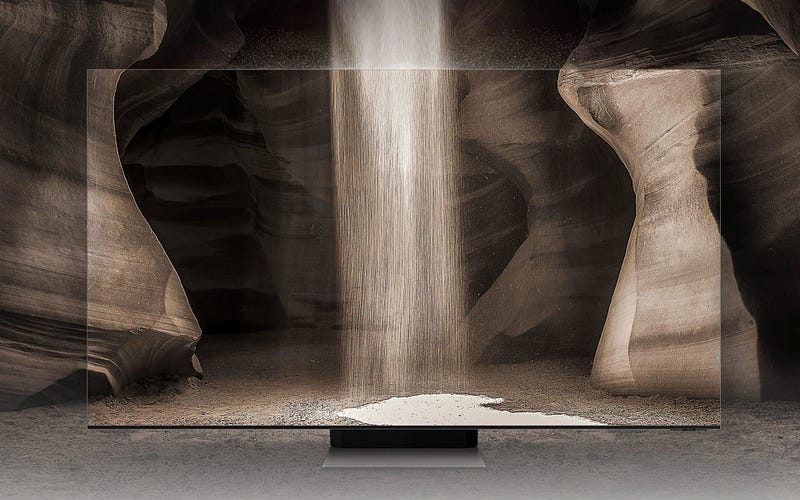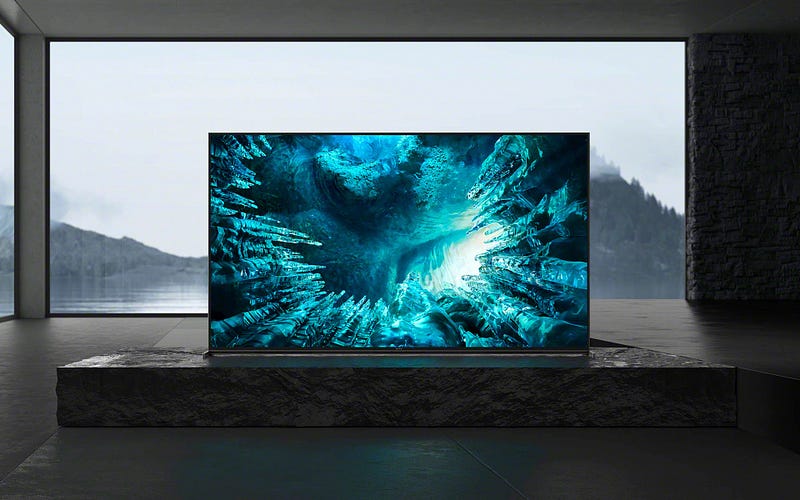The Struggles of 8K TVs: Why They're Not Catching On
Written on
The Challenge of 8K TVs
8K televisions were anticipated to be the next major advancement following the widespread adoption of 4K TVs. However, they have yet to achieve significant market presence, and analysts suggest this trend may continue for several more years. The dilemma lies in the nature of new technology: manufacturers must invest in development and marketing without any assurance of success, especially if the products fail to align with consumer demands.
According to insights from Omdia, a market research firm that has been monitoring this segment, 8K TVs were designed as the logical progression from 4K models, but they have failed to demonstrate their necessity to a large audience. Maria Rua Aguete, the firm's senior research director, predicts that by the end of 2026, only 2.7 million households globally will own an 8K TV, a sharp decline from an earlier estimate of 9 million by 2025.
The Statistics Behind 8K Sales
The numbers reveal a grim outlook: in 2021, 8K TVs represented a mere 0.15% of total television shipments, equating to approximately 350,000 units sold worldwide. Samsung dominated this market, accounting for 65% of these sales, though the company reported an 18% decrease in unit shipments compared to 2020. Notably, nearly one-third of 8K TVs were sold in the final quarter of the year, highlighting a seasonal spike, while sales declined in the other quarters.
Content Availability: A Major Barrier
A significant hurdle for 8K TVs remains the scarcity of content. Despite a drop in prices over the past two years, consumer interest has not surged. Aside from some promotional material on platforms like YouTube and a few specialized channels, there is a lack of genuine 8K content.

Manufacturers have attempted to persuade consumers that upscaling lower-resolution content to 8K is advantageous, but this has met with limited success. Size also poses a challenge; many consumers are reluctant to invest in 8K TVs that are typically 75 inches or larger due to space constraints.
The Future of 8K Content
The absence of 8K content appears to be the most critical factor in the slow uptake of these televisions, and resolving this issue will not be straightforward. Major studios have yet to announce timelines for producing movies in 8K, and most films are still not even being mastered in 4K. While streaming services like Netflix and Disney Plus may eventually offer some 8K options, their current priorities are elsewhere, especially since the bandwidth needed for 8K streaming can exceed 100–120 Mbps.
Historically, the "chicken and egg" dilemma faced by new display technologies—where the lack of content discourages purchases, which in turn deters content creation—has been a recurring theme. However, previous advancements saw gradual concessions from both sides, leading to the rich ecosystem of 4K content available today.

Manufacturers may need to reassess their strategies, particularly as consumer indifference toward 8K TVs is understandable given the current landscape. To pique interest, they must not only advocate for the benefits of 8K but also offer more competitive pricing to make these TVs appealing compared to 4K options.
Looking Ahead: What’s Next for 8K TVs?
The road ahead appears challenging for TV manufacturers. With no immediate resolution to the content availability problem, they will need to articulate a compelling case for the value of 8K TVs. While achieving widespread adoption before 2030 seems unlikely, manufacturers can position these models as the next logical upgrade from 4K over time. Alternatively, they may need to pivot towards emerging display technologies, such as QD-OLED, while simultaneously reducing the prices of existing 4K models.
In conclusion, the future of 8K televisions remains uncertain, with significant challenges on the horizon.
The video titled BEEFCAKE: gay men and the body beautiful (UCL) explores societal perceptions of body image among gay men, highlighting the intersection of beauty standards and identity. This discussion sheds light on how cultural narratives shape personal experiences and expectations.